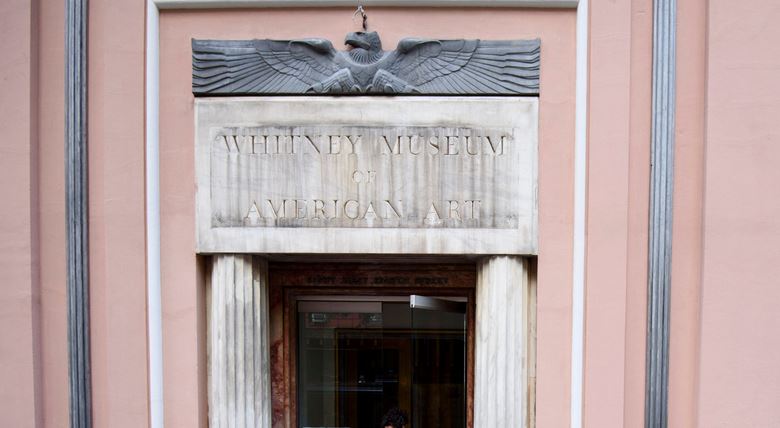
For an all-too-brief span of a few days, New Yorkers had the opportunity to see the original facade inscription of the Whitney Museum of American art on 8 West Eighth Street in Greenwich Village as it appeared when it opened in 1931. The building now houses the New York Studio School of Drawing, Painting, and Sculpture.
The incident happened this past Monday July 27 when a sidewalk shed outside the building was dismantled at the completion of a $450,000 restoration project. For the first time in six decades, according to the New York Times, viewers got to see the original Whitney Museum inscription, carved in Roman-style letters.
The Times report notes that “Whitney Museum of American Art” is engraved in marble over two fluted columns and capped by an eagle of cast-aluminum designed by Karl Free, though these elements have remained visible throughout the years even as the sign was covered over.
As part of the recent restoration, workers removed a sign for the “National Recreation Association,” which occupied the building after the Whitney left. The Whitney inscription was underneath that.
“What a timely coincidence,” Whitney deputy director and senior curator Donna De Salvo told the Times. “It’s a rich visual reminder of the museum’s downtown roots, to which it has now returned, and of the layers of history that make up this remarkable history.”
This past May, the Whitney Museum moved from its longtime home on Madison Avenue and 75th street in a building designed by Marcel Breuer, to a custom-built, state of the art new building designed by Renzo Piano that is perched on the southern tip of the Highline elevated park in Manhattan’s meatpacking district.
Over the past weekend, the school welcomed visitors to come inside and be escorted into the studio where museum founder Gertrude Vanderbilt Whitney originally worked.
Related stories:
Touring the New Whitney Museum
10 Fun Facts About the Whitney Museum
Ben Davis On Why the New Whitney Museum Is So Visually Pleasing but Worrying for Art